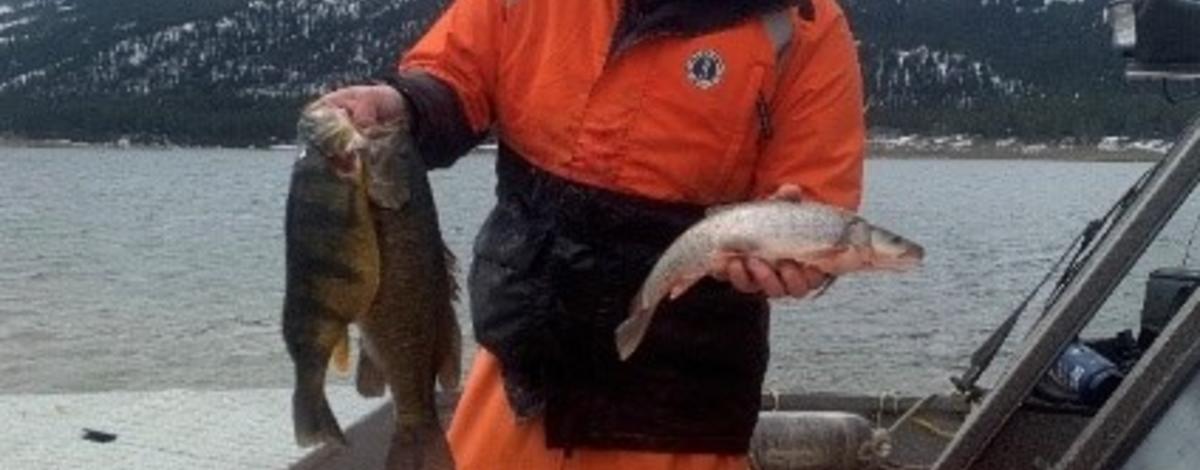Fisheries managers in the Southwest Region and University of Idaho graduate student Bryce Marciniak kicked off a study looking into the interactions between perch, pikeminnow and bass populations to determine their influence on the survival of juvenile perch.
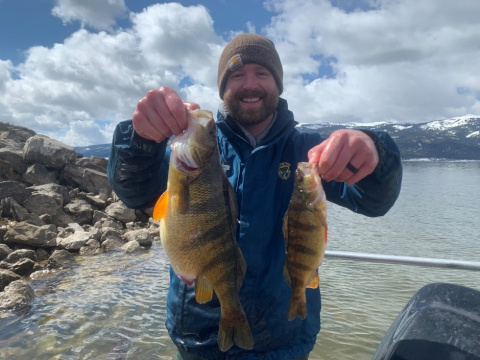
"For over a decade, we’ve observed prolonged periods of below-average recruitment for perch, which could potentially impact the long-term sustainability of the fishery,” said Mike Thomas, Regional Fisheries Biologist in charge of managing Lake Cascade. “The concern is that if there aren’t enough younger perch recruiting into the fishery, angler catch rates could drop significantly.”
Anglers should be aware that throughout the spring of 2023, they can expect to see a lot of orange University of Idaho buoys on the lake, while this graduate study is underway.
Recruitment: the number of fish surviving to enter a fishery. These fish have to pass through a number of life history stages (e.g., egg, larva, juvenile, etc.) before becoming vulnerable to fishing gear.
A Lake Cascade that doesn’t have massive perch is like a Waffle House that doesn’t serve waffles. Decades ago, the perch population crashed and angler participation followed. That led to an intensive perch restoration project by Fish and Game that rebuilt the prize perch fishery anglers currently enjoy.
Yellow perch have put Cascade on the map as a destination fishery, sometimes weighing in at over 2 pounds and living as old as 16 years. The reservoir attracts thousands of anglers from all across the world, from backyard fish fryers to sportfish trophy hunters, each contending for a chance to haul in one some of the largest perch found anywhere in the U.S.
One of the reasons Cascade’s perch are able to grow so big is because they can live to extraordinarily old age — up to 16 years. Biologists have found that if juvenile perch are able to survive to age 4 (about 8 inches long), the majority of them will survive long enough to become “jumbos” that are highly prized by anglers.
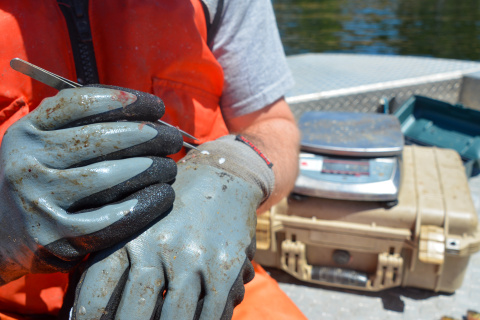
Diving deeper into factors affecting the perch population
Spending summer in the baking sun on a topsy-turvy boat in the middle of a mountain lake might be a dream come true for some, or possibly a nightmare to others, depending on who you ask, but for but for fisheries professionals, it’s all part of the job.
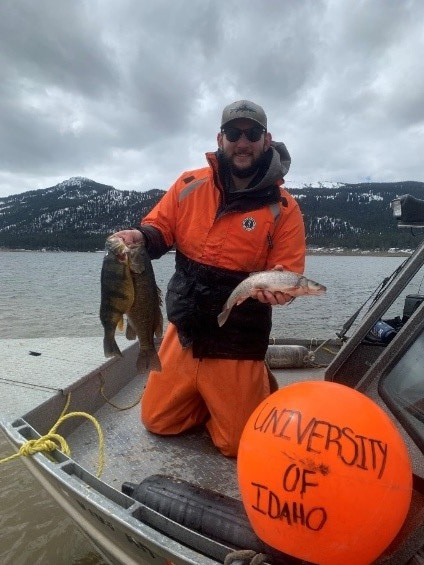
Fisheries managers initiated this project to gain insight into factors influencing the cycles in Lake Cascade’s perch population. The information will be used to identify bottlenecks and evaluate the importance of each species on juvenile perch survival.
Some perch populations exhibit boom and bust cycles; however, cyclical patterns are not always bad, and they’re common for many fish species. Many of the jumbo perch in Lake Cascade are a product of the boom portion of the cycle and efforts to reduce the severity and frequency of the bust portion could lead to a more stable, predictable fishery.
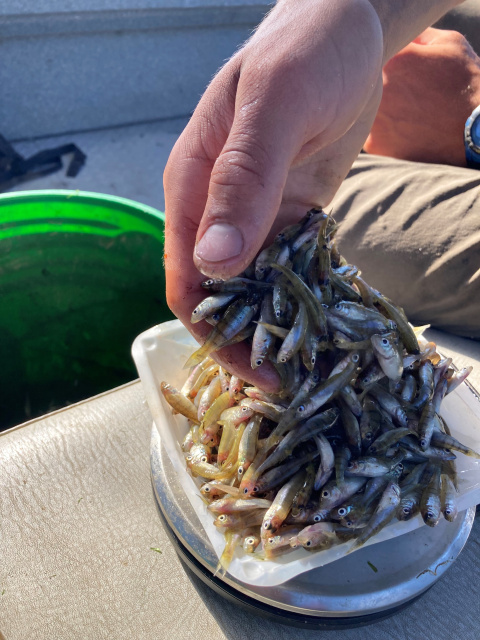
“There are a variety of reasons that can lead to cycles in perch numbers, including predation, cannibalism, angler harvest and food availability,” Thomas said. “In fact, some cycles can be responsible for producing periods of excellent fishing in Cascade, and periods of low recruitment can result in decreased competition for limited resources and improve growth rates for the perch that survive.”
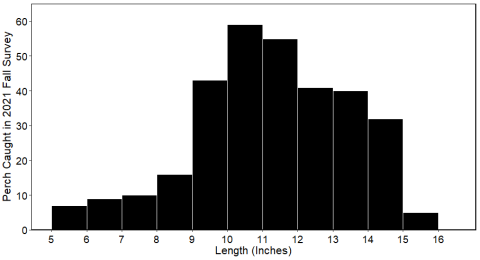
However, when the cycle stops completely (i.e. when lulls stay lulls and don’t tick back upwards) a fishery can completely collapse. This was the case in the late 90s and early 2000s prior to the Lake Cascade perch restoration project
Past cycles included a complete perch population crash
Prior to the restoration project in the early 2000s, fish managers determined the perch fishery would not recover without intervention. Studies showed that juvenile perch survival was significantly limited by predation from an overabundance of adult pikeminnow. Combined with virtually no recruitment of yellow perch, the situation was critical.
The restoration project involved removing 30,000 adult pikeminnow over several years and restocking the lake with 860,000 perch, thus tipping the scales in favor of perch.
Flash-forward to 2022, and fisheries managers are seeing similar trends with the perch population in terms of recruitment. Even though netting surveys show plenty of big perch in the reservoir, the relative lack of younger perch in the population is raising some concern from fishery managers.
“Over the last decade, we have seen periods of very poor survival of juvenile perch, leading to very little recruitment for several consecutive years,” said Thomas. “If recruitment doesn’t recover, we could be left with a situation similar to the early 2000s.”
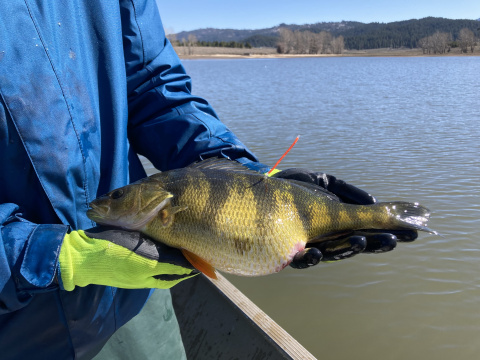
Not all doom and gloom
Gillnet surveys in 2021 found that the size of the average perch caught was longer than 10 inches. In 2022, that trend has ticked ever more slightly upward from the low point observed in 2018.
That’s good news, especially for perch fishermen. Thomas says anglers should still expect to find the jumbos that give Lake Cascade its acclaim.
“We’ve started seeing some indications of increased recruitment starting in 2020, but not yet at a rate that will provide fishing like we all enjoyed in 2015 or so,” Thomas said. “There are still lots of perch between 13 and 16 inches swimming around in Lake Cascade.”
For more information about Lake Cascade and other fisheries in the McCall area, contact the McCall Fish and Game office at (208) 634-8137.

